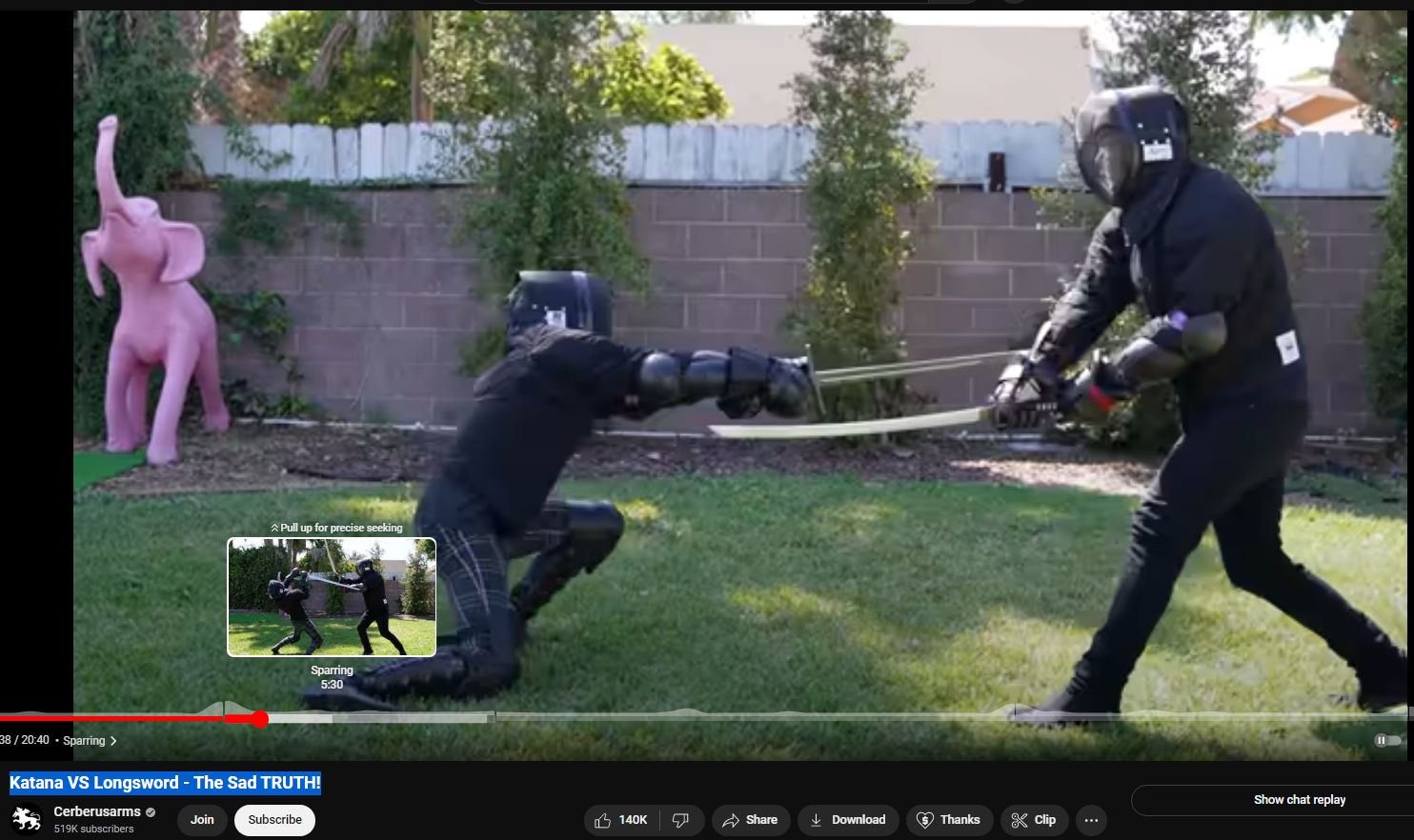Katana vs Long Sword
Nifty gem comparison. https://www.youtube.com/watch?v=WBESIyEInW0
Katana vs. Longsword: Exploring the Differences in Two Iconic Swords
Swords have long captured the imagination of history enthusiasts, martial artists, and fans of medieval weaponry. Among the most iconic swords in history are the katana from Japan and the longsword from Europe. In this blog post, we’ll delve into the differences between these two legendary swords, examining their design, functionality, cultural significance, and combat techniques.

Origins and Cultural Significance
1. Katana:
The katana is a traditional Japanese sword that emerged during the feudal period. It is characterized by its curved, single-edged blade and slender profile. The katana holds immense cultural significance in Japanese history and samurai tradition, symbolizing honor, discipline, and martial prowess.
2. Longsword:
The longsword, also known as the hand-and-a-half sword, is a European sword that gained prominence during the medieval era. It features a straight, double-edged blade and a longer grip that allows for versatile two-handed or one-handed use. The longsword played a crucial role in European knightly combat and fencing traditions.
Design and Construction
1. Katana:
– Blade: The katana’s blade is typically made from high-carbon steel, folded multiple times to achieve a sharp edge and resilient core. It has a distinctive curve known as the “sori,” which enhances cutting efficiency.
– Guard and Grip: The katana’s guard (tsuba) is often minimalist in design, focusing on functionality rather than ornate decoration. The grip (tsuka) is wrapped with traditional materials like silk or leather for a secure hold.
2. Longsword:
– Blade: The longsword’s blade is usually straight and double-edged, designed for thrusting, cutting, and slashing maneuvers. It is crafted from high-quality steel, with variations in blade length and width based on historical and regional preferences.
– Guard and Grip: Longswords feature elaborate handguards (quillons) that provide protection for the wielder’s hands during combat. The grip is longer than that of a katana, accommodating both one-handed and two-handed grips.
Combat Techniques and Usage
1. Katana:
– Techniques: The katana is renowned for its precise cutting techniques, including diagonal slashes (kesa-giri), horizontal cuts (suji-giri), and overhead strikes (kiri-age). It is often used in conjunction with a smaller companion sword called a wakizashi in the samurai’s daisho pairing.
– Combat Style: The katana’s combat style emphasizes agility, speed, and fluid motion. Samurai warriors trained extensively in the art of iaido (sword drawing) and kenjutsu (swordsmanship) to master the katana’s techniques.
2. Longsword:
– Techniques: Longsword techniques encompass a wide range of offensive and defensive maneuvers, including thrusts, cuts, parries, and binds. Longsword fencing systems such as German Fechtbuch and Italian Fior di Battaglia document various techniques and strategies.
– Combat Style: Longsword combat involves a combination of footwork, blade control, and strategic positioning. Fighters employ both offensive actions (attacks) and defensive actions (blocks, parries) to gain advantage in combat.
Conclusion: A Tale of Two Swords
In comparing the katana and longsword, we discover two remarkable swords with distinct characteristics, histories, and combat styles. While the katana represents the elegance and discipline of Japanese swordsmanship, the longsword embodies the versatility and sophistication of European knightly combat. Both swords have left an indelible mark on martial arts, culture, and popular imagination, showcasing the rich diversity and artistry of swordcraft throughout history. Whether you’re drawn to the precision of a katana’s cut or the power of a longsword’s thrust, these iconic swords continue to inspire admiration and fascination among enthusiasts of the blade.